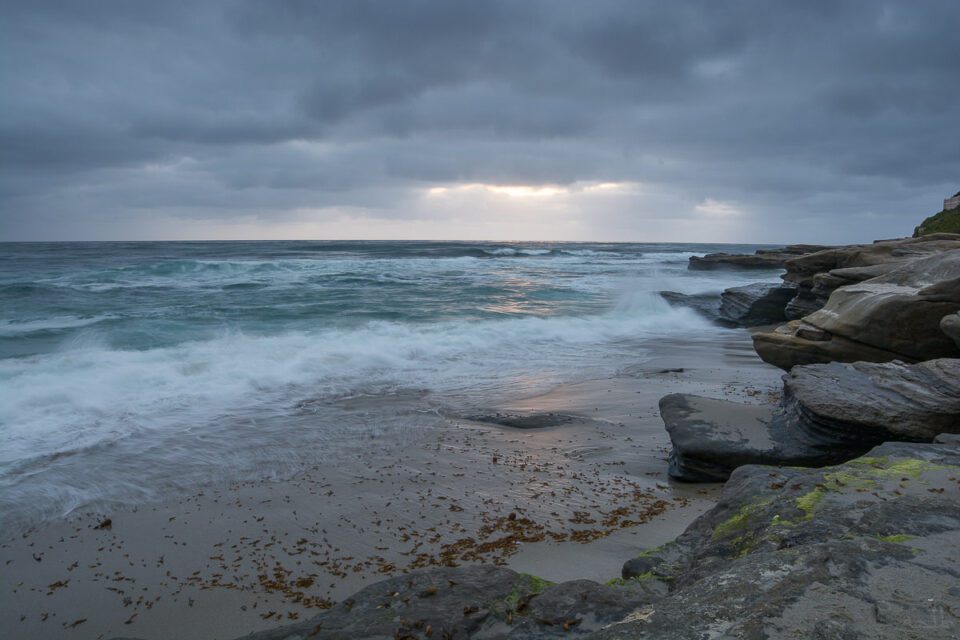I have a confession: I have a love/hate relationship with seascapes. Sometimes I feel like they are easy, monotonous and a little bit of a sham — an easy way to impress others without having to put in the requisite amount of work. On such days I vow never to shoot a seascape again. And then there are moments when I cannot resist the pull of the ocean. When the sky looks like it will go up in flames at sunset casting it’s glow on everything the light touches — the sand, the rocks, the water. When the tide is high and the waves crashing violently into the surf promise dramatic foregrounds. ‘This will be my greatest seascape,’ I tell myself as I pick up my gear and head for the beach, bracing for the challenge ahead.
By now the reader has probably picked up on the contradiction. How can something be easy and boring and challenging and exciting at the same time? I would argue that it can be.
Truth is that the seascapes do simplify the most critical aspect of photography — the composition. A typical ocean-front vista is so inherently interesting and appealing and the shapes of the constituent elements (shoreline, rocks, sand, waves) so undefined that the photographer has tremendous freedom and opportunity with how to frame the shot.
The photo above taken on a day when the sunset had complete fizzled out. The thick clouds had flattened the dynamic range and so all I had to do was point-and-shoot to capture this image. I returned home disappointed but out of curiosity, posted this image on social media to see how it would be received. To my surprise it garnered far more accolades than images that I believed were far more creative and challenging to execute.
At the same time, the most interesting seascapes often involve getting up close and personal with those nemeses of cameras and lenses: water & sand.
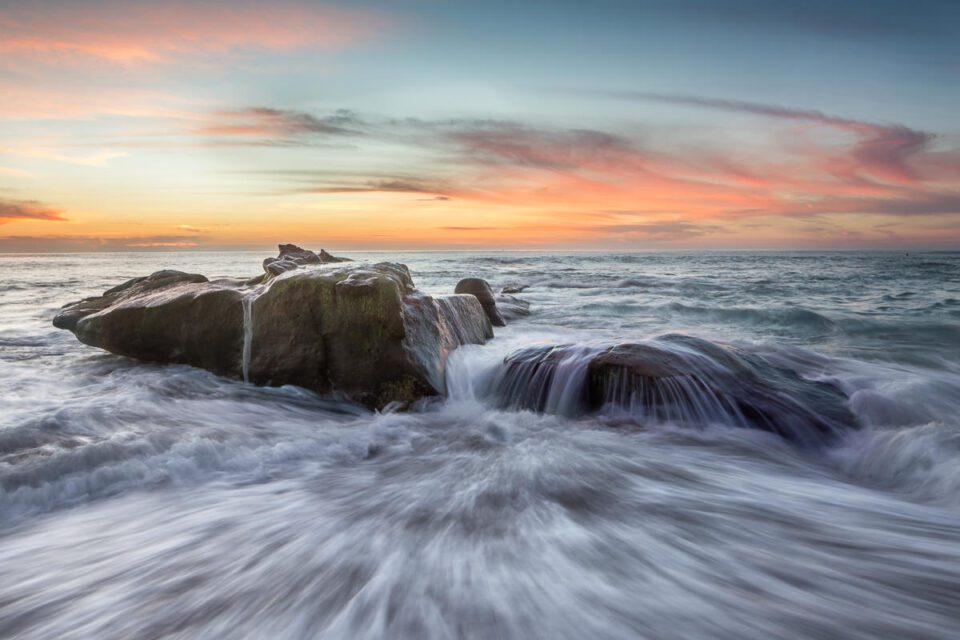
Soon after I took this picture, a rogue wave came, swept right past me and my gear, slamming into the rocks behind me leaving me drenched on the rebound.
While depth-of-field is a challenge for all types of landscape photography, it is especially difficult in seascapes. So much of what’s in the frame is in motion, making techniques like focus stacking impossible and forcing the photographer to get it right on the spot.
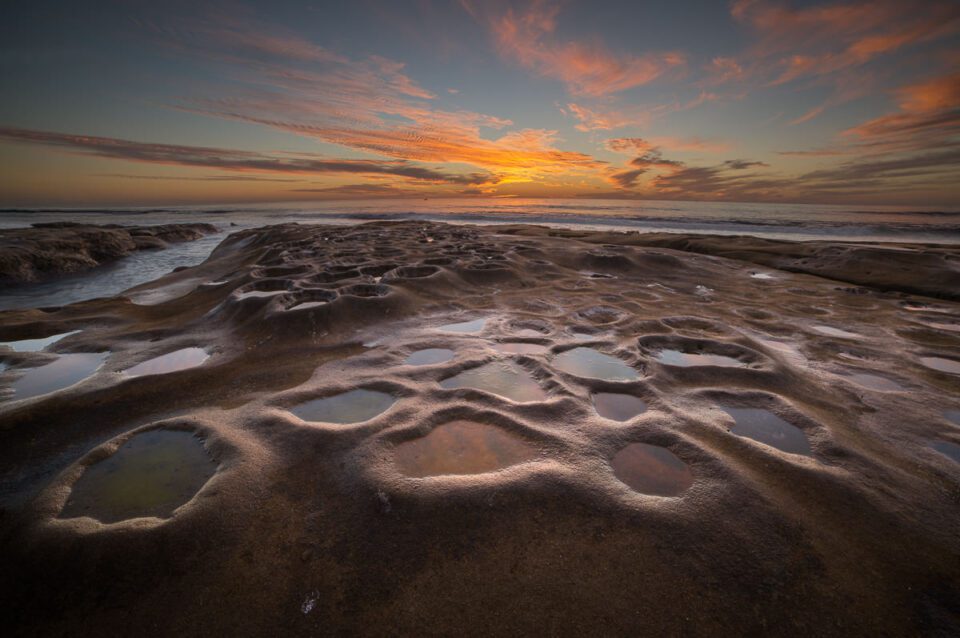
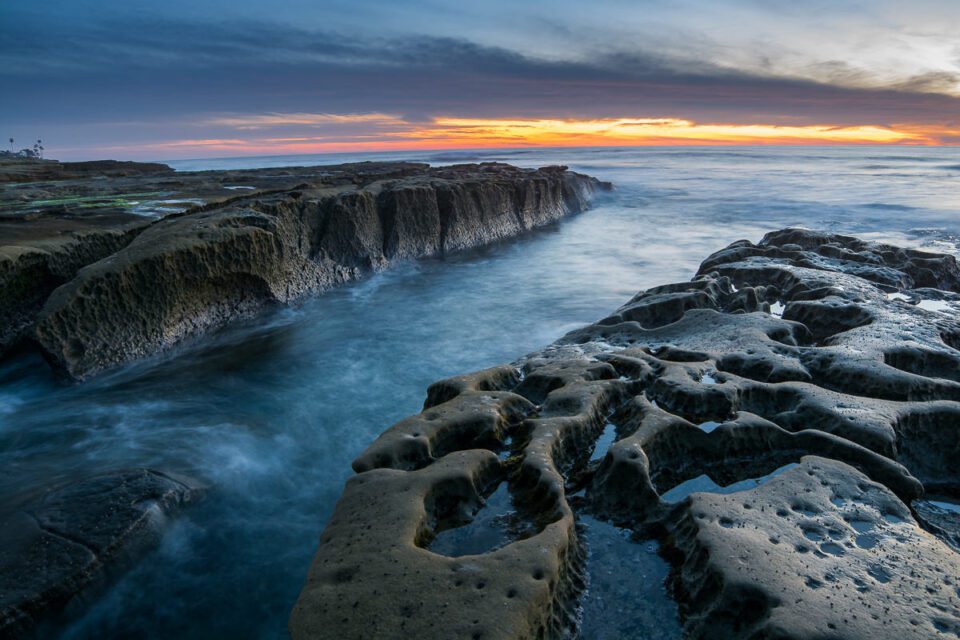
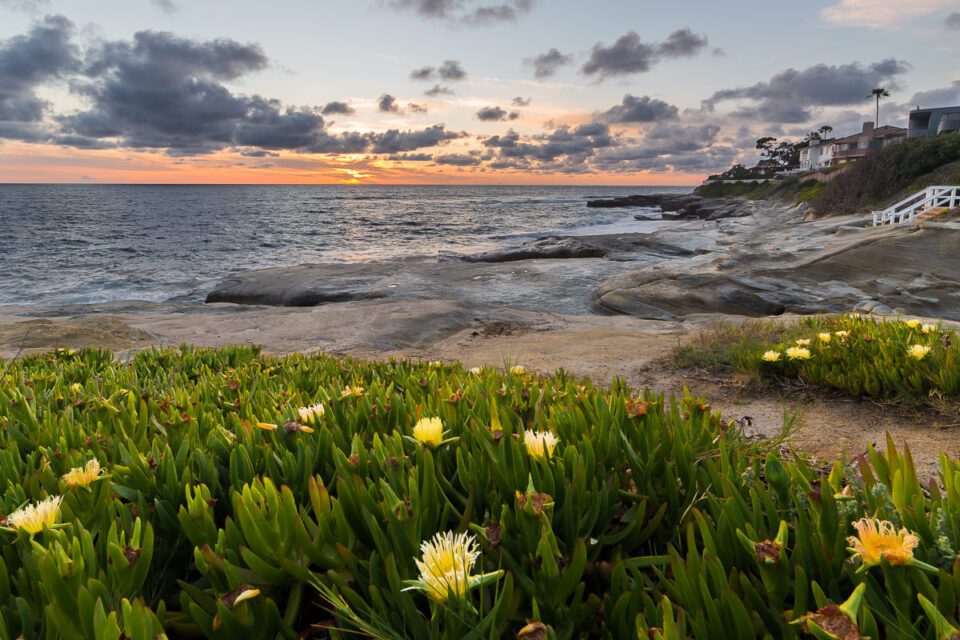
More often than not, a very promising sunset will fizzle out, forcing the photographer to get creative in other ways, using wave motion and light to create interest.
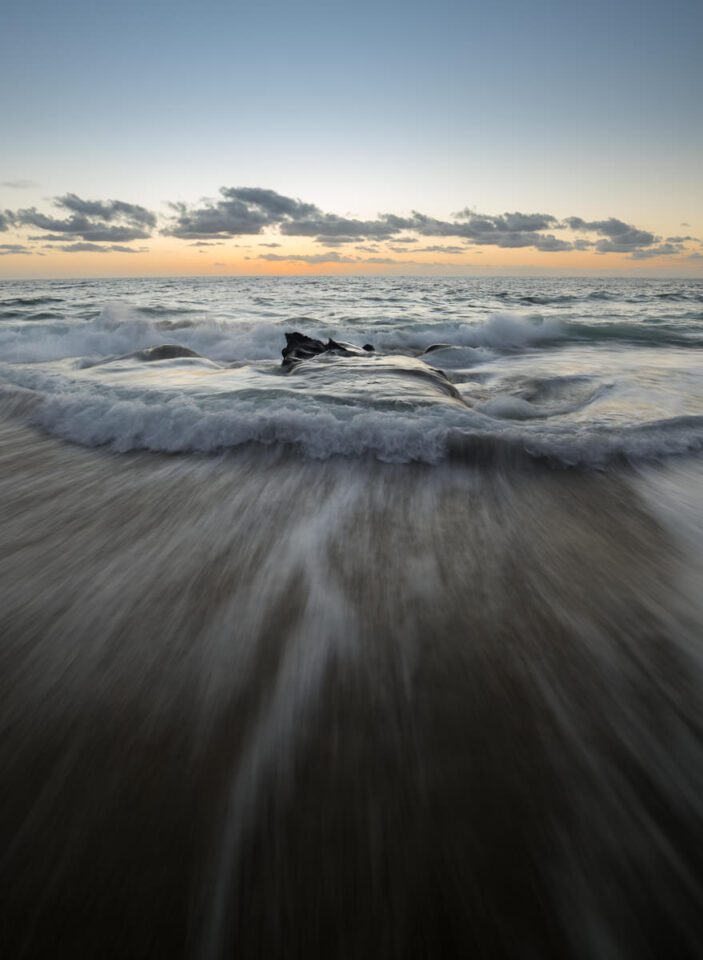
Pier shots are quite often a safe choice, with the pier providing a convenient, frame-filling foreground for the dramatic sky. It is not wholly without challenges however, as most compositions have a significant portion of the pier covering the background making it difficult to use graduated filters to address reduce contrast. Also, in my experience, piers offer limited composition opportunities.
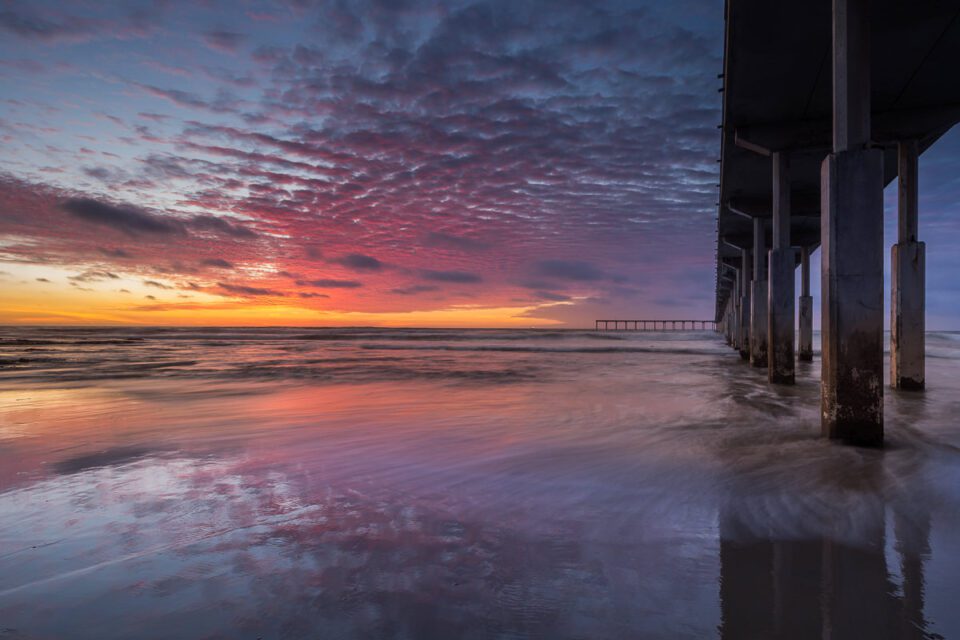
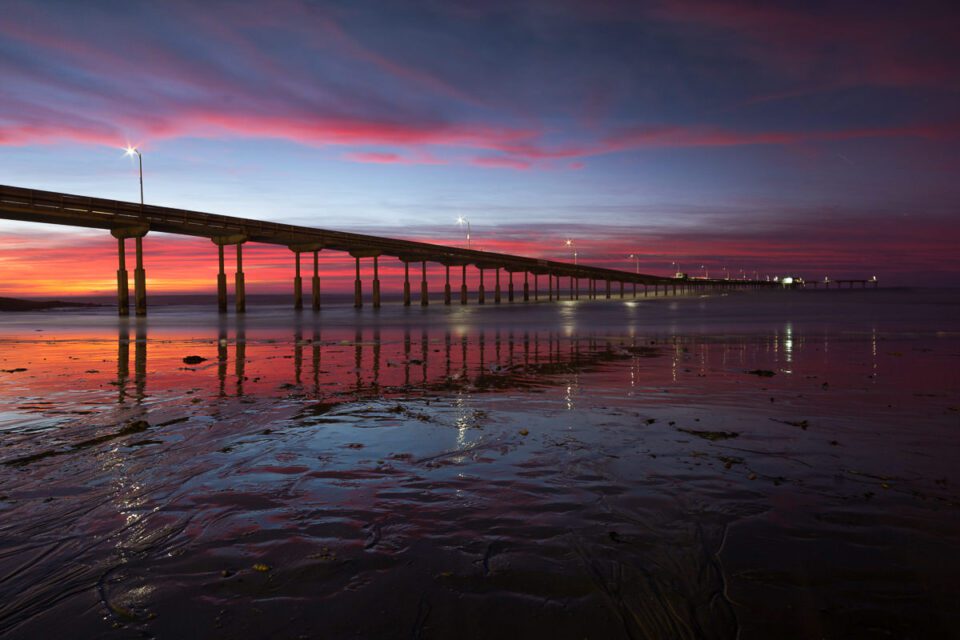
Quite often seascapes involve slowing down the shutter speed to create that silky water motion, thereby requiring the use of tripods. It is not quite that easy though, because conditions are often windy and the tripod will need to be placed in moving water for the most interesting compositions. Therefore, the tripod needs to be stable as well as durable (salt water and sand are not kind to tripods).
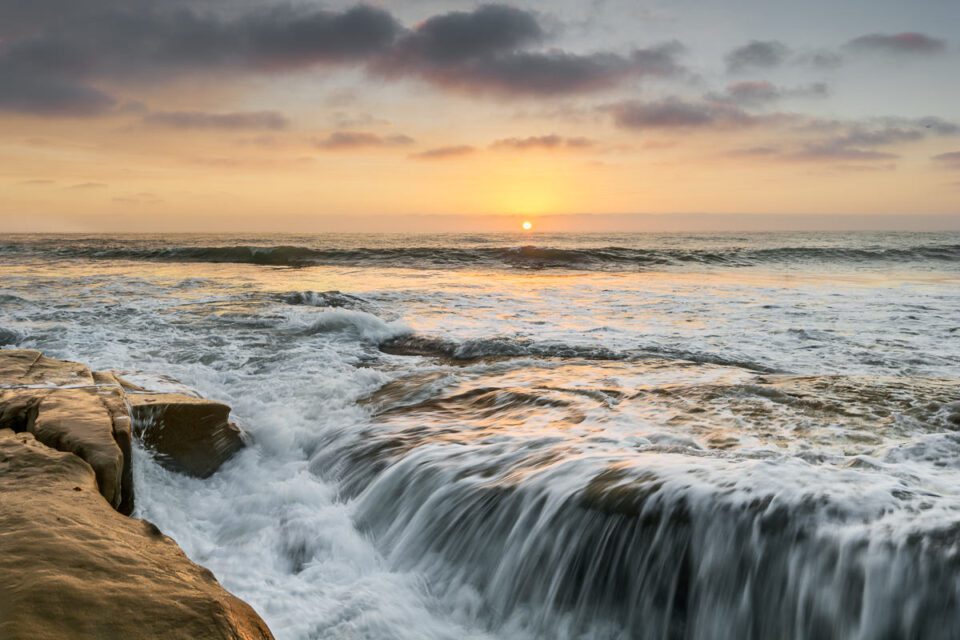
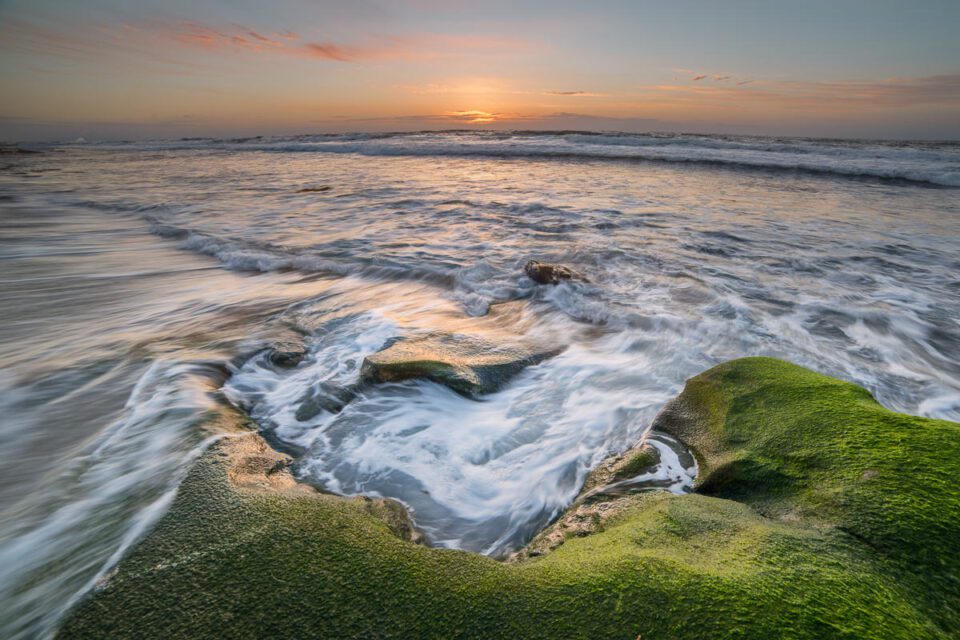

A low tide is not all bad. When the water recedes, it reveals a diverse, alien landscape below that can make for some interesting photography.
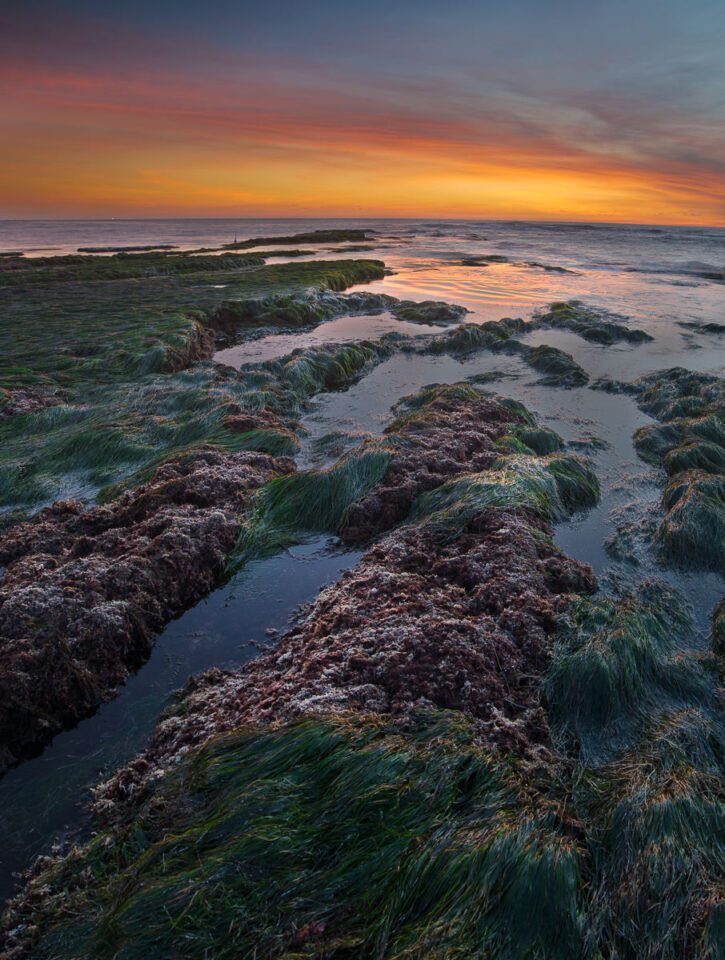
Sometimes, all the stars align perfectly and I manage to make the kind of capture that is going to motivate me to keep going back for more.
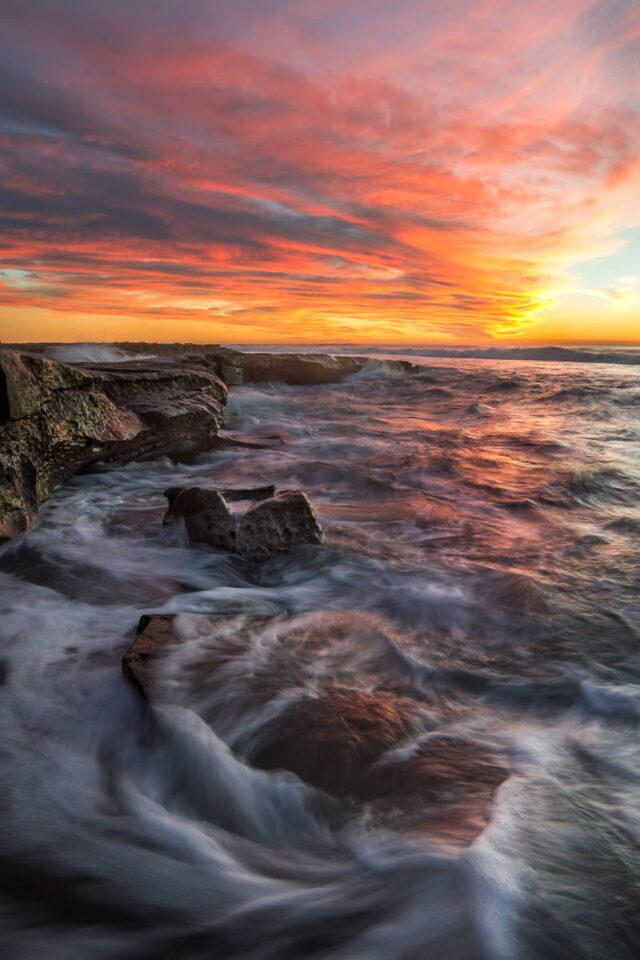
At the end of the day — photography or not photography — sunsets at the beach are one of nature’s most remarkable spectacles and I realize what a privilege it is to be able to partake on a regular basis — something for which I will be eternally grateful.
The post My Complicated Relationship with Seascapes appeared first on Photography Life.

